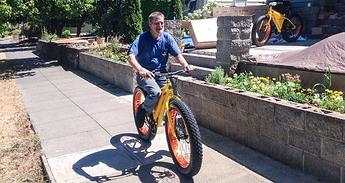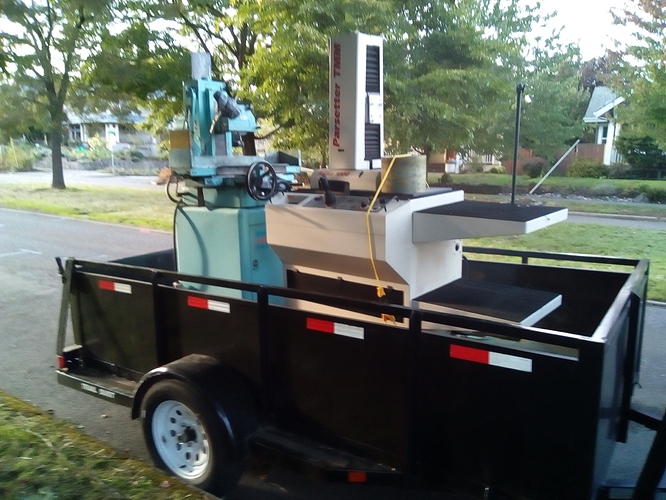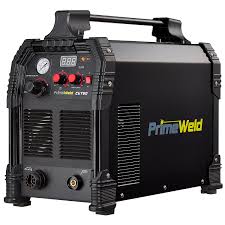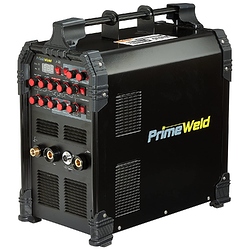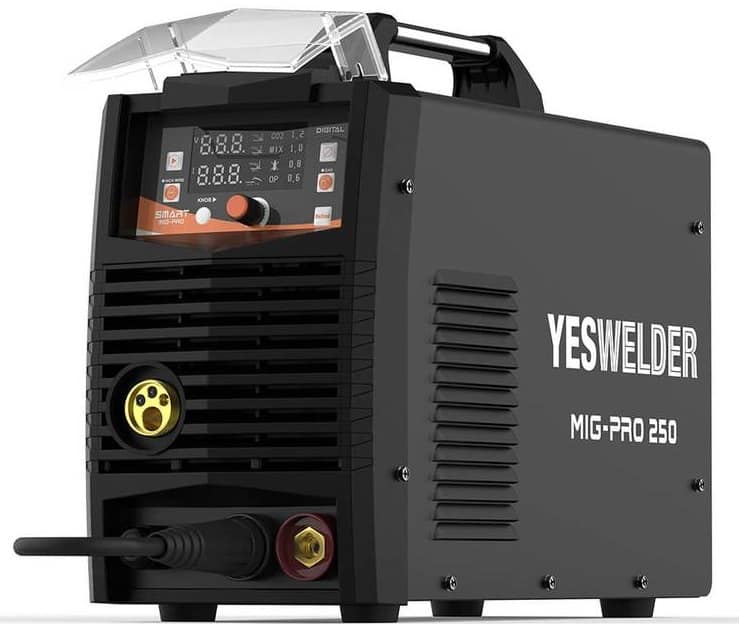Hi, I’m MisterFixIt1952, also known as Bruce Cushman. I live in the United States in Portland, Oregon. I’ve been following Jon’s wonderful youtube postings since shortly after he started sharing his efforts with the public. For some time I have wanted to post a log of my own smart home adventure so while posting to another thread in Superhouse, I finally decided to start my own thread telling my story. .I tried to break this post into topics to make it easier to follow or just allow you to get to the meat if my verbiage starts to boor you. I plan on adding pictures as soon as I find the time. It may be a hefty read but I will endeavor to make it interesting and informative for those intrepid souls who read it all the way through.
I have been doing my own smart home project in some form or another for the past 30 years. I started with x-10 modules but throughout the years I have wanted to build a real, from the ground up, superhouse, or as I’m fond of saying, “my Jetson’s home of the future”. Probably a dated reference but at 65 years of age, I guess I am kind of dated myself. Finally, the technology became available (at an affordable price) to allow me to achieve my dream.
Being a compulsive remodeler and gadget junky as well as a retired IT professional, I finally have the time to implement my dream of building a smart home. I am currently at the tail end of a 9 year remodeling ordeal. I use the term ordeal to describe my project because numerous personal problems have cropped up since starting. What was supposed to be a one, maybe two year project in 2009, stretched out to the current date. What I ended up with was a whole house rebuild, from basement to attic. I have rebuilt the entire house, using modern materials and building techniques, doing all the work myself. In Oregon we are allowed to do any code compliant work ourselves without having to hire a licensed plumber or electrician but you had better know your codes, the inspector does! I am finally down to the last 10% in every room lacking only some wiring, my code inspections and some drywall. I plan on finishing before summer’s end. Yehaa!!!
Some History
My home started out in 1987 as a 1909 craftsman style house which I purchased for the incredibly low sum of $14,500. Despite the low price, the house was situated in one of the better neighborhoods in NE Portland. Granted, the house was in terrible shape, being used as a low income rental property. I bought the house from a retired railroad worker, who lived in a different state. I’ve lived here through 2 wives (and divorces) and now live with a room mate, who shares expenses with me. Over the years I have remodeled the house three times, each time improving the house a bit more. This last and final effort is the culmination of all of my hard work and is the one where I finally get to implement my lifetime dream of building my own “superhouse”. Just as an aside, due to gentrification, and the fact that suddenly Portland is one of the most popular moving destinations in the country, my house is now worth about 1/2 a million dollars. Egads, who would have thunk it!
The Work to date (sort of)
As I said, I’ve completely replaced the plumbing and wiring. I’ve moved walls, resided the exterior and replaced all of the windows with double pane Vinyl. I tore down the old leaning one car garage and replaced it with an attached garage with as large a shop as code allowed. The entire house has been insulated as well as a 1909 house can be (and then some) and every room has been re-sheetrocked. One of my former jobs (before IT) was head designer for a custom cabinet company and during my tenure there I rebuilt the kitchen, removing the wall between the dining room and kitchen, giving the house an open floor plan. I also enclosed part of the front, full length porch, adding to the size of the living room (I’ve moved the front door twice).
During this final remodel I reworked the front yard, adding a split block, brick capped retaining wall across the front of the property. I tore out the old wooden stairs, replacing them with split block risers with red brick treds. I mention this because as part of my smart home project I have wired the front steps with LED waterproof strip lights under the front edge of the brick treads. The RGB strips are connected to proximity sensors built into the two columns on either side of the steps and light up when approached. Because the LEDs are RGB, I can change colors for a seasonal decorative effect. Orange for Halloween, red & green for Christmas, etc. I also installed a 4 zone lawn sprinkler system that I eventually plan on running using rain water stored in (4) 55 gal. containers buried under a crawl space under the front third of the house.
The House Layout (a tour)
Before I go any further it might help to get a quick tour of the house to provide a frame of reference. As I stated earlier, the house is a 1909 craftsman style house, Old growth fir 2x4s with balloon framing, meaning, no top plates on the outside walls where the ceiling meets the walls. The outer walls are 12" tall with a double top plate on which the roof joists set.and the 9’ ceilings joists rest on a 1x6 ledger board which is dadoed into the outside walls. Definitely not up to modern codes as there is no fire block between floors. This is another reason I stuffed massive insulation in the outer walls. The good part is, it’s easy to run wire into the attic because there is no top plate. Typical of older homes the house is basically split into two halves with a main bearing wall down the middle dividing the house in two. There is an attic (non habitable) with low ceilings and just enough to stand up in the center of the floor where I’v installed my equipment room. Remember the outer balloon wall above the ceiling joists is about 2 ft tall in the attic with the roof sitting on top. The roof is essentially made up of 2 roofs in a tee shape. One roof is parallel to the street in front of the house with the other roof perpendicular to the front roof. From the air the roof has a tee shape to it… Needless to say, the attic is short and the 2x6 joists of the ceiling below make it unsuitable for anything other than storage. The attic equipment & furnace room, is situated directly over the main bearing wall down the center of the house, on the main flor. At the front of the house, coming through the front door, on the left, is the living room (with fireplace), on the right is an office/bedroom through double pocket doors. Moving back through the house, on the left, is the dining room with the kitchen past that with a peninsula between the two. Just before entering the kitchen, on the right, is the master bedroom door. The room is fairly large, about 15’ x 15’. My queen sized bed abuts the outer wall with a large window behind the bed. Outside the window is my concrete driveway, in front of the garage door. The driveway is 15’ wide and long enough to park 3 cars or a really big RV & 1 car. At the foot of my bed is the bearing wall and I have a 56" flat panel LED TV hung on the wall. The room has 7.1 surround sound speakers built into the walls and ceiling with a sub woofer built into a closet that opens into the dining room on the other side. The actual wall between mty room and the dining room is two walls and provides extra support to the attic above and a run for gas pipes and ductwork running throughout the main floor and into the basement. Sitting on my bed, facing the TV, the closet that opens on the dining room side is on the left. Between the master bedroom and the office is a small lavatory with a sink and toilet. there is a small closet to the left of the lav in the office room. The lav occupies about 2/3s of the old bedroom closet that was situated between the master bedroom and the office. There are doors that connect both the office and bedroom to the lavatory. Moving from the master bedroom toward the back of the house, you go through a pocket door into a walk-in closet. This closet used to be the only bathroom in the house and is about 7.5’ wide x 10.5’ long. Walking through another pocket door you walk into the master bath suite. This used to be a bedroom in the back corner of the house. Now the bath has a large shower, double sink vanity and a wall mounted toilet and a urinal. I’m a bachelor so I get to install a urinal (with auto flush). There is a door off the master bath that goes upstairs to the equipment room in the attic.
The Basement (new construction)
At the back wall of the master bath/house, on the left is a door that opens on a small hallway that leads to the back door, kitchen and the stairs to the basement. Going down the basement stairs, there is a short hallway. On the right, under the kitchen, is a large bedroom. Down the hall, on the right is a smaller bedroom. The closet for the first bedroom is between the two bedrooms rooms. At the end of the hall, on the wall is the new mains panel and behind that is the small bedrooms closet which also contains a whole house vacuum system. Also in the hall on the right between the two bedroom doors is a small closet where the basement light and AV panel is located. There is a 2-1/2" gray PVC electrical conduit that runs up to the attic equipment room for all of the AV and low voltage lines to the main control panel. At the foot of the basement stairs, to the left, Is a utility/laundry room, a 2nd master bath. In front of those two rooms heading back towards the front of the house is a large living space/home theater with a second full kitchen. The basement footprint is about 2/3 of the house with a crawl space toward the front under the living room & office. The dividing line for the basement & crawl space is the wall between the dining room and the living room. The front of the fireplace is diagonal, facing the center of the living room with it’s back towards the corner of the master bedroom. Luckily, the crawlspace is about 4-1/2’ tall so I can use it for storage space. The basement was a huge amount of work. I had to excavate the side of the house and install new drainage and a 3x30’ window well for egress windows required by code for the basement bedrooms. The drainage pipes thaat wrap the whole side of the house keep water from infiltrating the basement. The whole basement exterior walls were waterproffed using a combination of Radon seal and a black plastic tar like substance which was applied to the walls then covered with a 9 mil black plastic vapor barrier. The outer walls are 2x4 construction allowing me to insulate the outer walls The concrete foundation comes up to about 54" with a 2 foot cripple wall on top giving me a basement height of 86", just above code minimum. No0t a full 8’ but pretty close so it doesn’t feel low like some basement conversions. Above ground level the insulation value is over R-24. Pretty good for a basement. Also the 3 large egress windows provide quite a lot of natural light so it doesn’t have that cave dweller feeling that you can get with basement living quarters. The darkest room is the living room which is adjacent to the driveway and only has one 24x50" wide window. This is actually a plus since it is also the home theater. When money permits, I plan on installing a 70"+ LED flat panel, or at least as big as I can afford. At least a 62". Luckily LEDs just keep getting cheaper. All of the basement ceiling lights are recessed LED can lights 4 & 6" with 4’ led tubes in the utility rm. and the big bedroom. Also, like the front steps, the basement stairs has LED strip lighting along the length of the stairs @ the walls. I’m thinking about putting lights under the stair tread lip, also. One last item for the basement stairs. I’m 65 years old and I plan on dying in my home. I’m still in good shape physically but I know from experience that it only takes one fall to make it tough to get up and down stairs. Since the laundry is in the basement, this becomes even more of an issue. Luckily, I came across an almost brand new, still in the box, stair climber chair like you see in the commercials. I paid a whopping $100 for the whole thing, including the track. I plan on installing the chair just in case. I can use it to haul my laundry up and down even if I don’t need it. Besides, it might be fun being able to just ride up and down when I feel like it. Who says old guys can’t have fun too. It even has a hand held remote control. House of the future, YeeHaa!!!
Deck & Garage/Shop
Back upstairs, going through the kitchen, there is a sliding glass door that opens onto a large deck. To the right, in a corner is a huge hot tub. beside that is the door to my garage/shop. I built the garage onto the house in the early 90’s. The deck, siding and garage with driveway was the first of my 3 remodels followed by the kitchen. The garage is 15’ wide, which is the widest I could make it by code, but it is about 65’ deep and is ell shaped and wraps around the deck, with the hot tub in the corner. At the back of the shop, to the left is a small room, about 8’ wide by 14’ long. This is my machine shop and contains my metal lathe, milling machine and assorted tools (grinders and such). The front part of the garage/shop is a single car garage with a built-in paint booth with a 6 bladed exhaust fan installed in the outer side wall. I have a rack of furnace filters that I put under the garage door and with the fan on I can paint autos (or anything else I want) My ex wife use to crash the cars a lot so the paint booth has paid for it’s self many times over since I taught myself body repair and painting… The back of the main shop is a pretty large room which will soon contain my CNC plasma table, as soon as I get time to build it. Right now there is a huge table saw which takes up too much space and is soon to get sold to make more room. I gave up wood working years ago and now do mostly metal work. As you might have guessed, the shop is my favorite part of my house. If I had my way, I would have a huge shop with a small living space but I have to work with what i’ve got. It’s been a struggle trying to fit all of my tools in the space available. I am a total tool junkie. I have to find room for a full sized english wheel, 4 welders, a new 40" foot shear for sheet metal a sheet metal brake 6 rollaround tool chests, the plasma table and next year, a home made CNC milling machine and surface grinder. Gonna get tight in there. If I put most of it on wheels I should get it all in. We’ll see. Well, that’s it for the house tour. I think I’ve hit all of the high points. Next I will discuss the electronic infrastructure. Some of it is currently installed, all of it is purchased (or scrounged) and waiting for installation. My moto is, the more I install, the cleaner my house gets. I currently have boxes and storage tubs full of items waiting for my attention. My shop is so packed now, I have my electric bikes parked in my living room inside the front door. and a unit of solid oak flooring in my dining room waiting for installation as soon as my inspections are through next month. Too many exposed studs, not enough finished walls. Soon!!! I can almost feel drywall happening. At least I finished getting the house exterior refurbished and painted last summer. The last paint job was when I installed the garage. I still have a bit of trim to do but that can wait until I finish the inside.
Smart Home Features
All exterior entry doors are controlled with an RFID lock & keypad and there are security cameras at each entrance, giving me a good view of visitors. The cameras can be viewed on any of the flat panel TV screens, situated in every major room in the house, including the bathrooms. My eventual goal is to have the house know where I am in the house at any time and turn on the appropriate monitor when visitors activate one of the prox. detectors (or ring the door bell). In my AV rack in the attic I have an 8 x 8 HDMI matrix switcher that can be controlled using a serial port. Any of the 8 inputs can be directed to any of the 8 outputs in any combination so it will be possible to direct the output to any HDMI panel using MQTT (mosquitto) and the Openhab controller (or Node Red). Just to let you know, 8x8 matrix switchers are ungodly expensive. typically costing $800-1500 each, depending on features. A 4x4 matrix only costs about $200. Go figure. Luckily, I found a few used ones on eBay and picked up a great one for $400. It’s HDMI 1.4 so it doesn’t do 4K but I don’t care. Little content and all of my current sets are 1080p also my eyesight isn’t what it used to be so I typically watch most of my video in 740p mainly because my video movie collection is in 720p to save space. Since i have somewhere in the neighborhood of 4000 titles in my collection, storage space is a constant battle. I just purchased (2) 3TB refurbished enterprise drives from Amazon and there already full. I’m trying to get my storage requirements down to a manageable amount. I would like one low powered NAS box to serve the AV rack. As it is my current server has 16 drives in it and most drives are 2TB or better. I currently am able to serve up 4 different channels of video using a combination of Western Digital Video servers and Android media boxes, with Kody. This should satisfy all of the house occupants. I still have a ways to go to work the kinks out of my AV system. Right now I’m just concentrating on the lighting HVAC, security and such. Also have a telephone controller in the AV rack which is also connected to the front door panel. This will allow me to answer the door or telephone through the ceiling intercom speakers just by speaking to the room or picking up one of the remote handsets. Pressing certain buttons on a handset allows me to talk to the front door or even unlock it from anywhere in the house. Like I said, “you can’t have too many gadgets”, especially in a real smart home, not just some poser house with only remote controlled lights.
Wiring (lights)
I am currently wiring the final part of the house, the lighting. I have saved this for last due to my inability to decide how I wanted to implement the switching. As of now, I have wired the lights using 3 and 4 way conventional decora switches at each room entrance with an additional end switch terminating at a lighting panel located in the basement equipment closet. This scheme allows me to install a relay at the termination switch, at a future date, giving me the control I desire. Although this scheme keeps me in compliance with the national codes, it is wire intensive, overly complicated and frankly, a pain in the ass. Also this method uses a lot of expensive 3 wire romex and is somewhat of a nightmare to plan and wire. Try wiring 3 or 4 switches together sometime and you will get my drift. Oh, I almost forgot, the new codes require power at the switch, further complicating things. No more power at the light with 2 wires going to a switch, even in closets.
Rewiring the New Wiring
Since I have only wired the kitchen and 1 bedroom so far (the outlets are already installed), I have decided to rip out the existing jumble and rewire every light using a homerun scheme with low voltage push buttons, similar to Jon’s method (thanks Jon). The ease of installing cat5e wires instead of 2 & 3 wire romex, far outweighs the task of removing the completed wiring and home running all of the lighting to the central ppanel in the attic. Instead of having a large bank of switch boxes outside of each room entrance, I can now have only one, low voltage box with multiple (and lighted) push buttons. Controlling the lights from a central relay panel allows me to add dimming and occupancy sensors at any time, with ease. Also, with the new codes requiring AFCI (arc fault) breakers in all bedrooms, this makes wiring the lights much easier. I am installing LED lighting throughout the house and the current draw is so minimal that I will require fewer lighting circuits at the mains panel. I will stager the loads so with 2 lighting circuits, no level in the house will go dark in the unlikely event that I do trip a breaker. Also, what would have taken me more than a week to wire, the lighting infrastructure can be wired in a couple of days.
The Attic, Equipment Rack, Boxes & More Boxes
All of my light switch boxes are connected to the attic using plastic flex conduit, run from the wall box to the equipment junction, in the attic, or in some cases, just through the top plate into the attic floor space. At any future date, I could easily add or change my buttons or add on control touch panels without ripping out any completed drywall. Since I am known for changing my mind and reworking a project at some future date, this is a huge feature. At each TV panel installation point, in the main rooms, I have also installed larger sized flex conduit, large enough to feed HDMI cable through, along with cat6 network cable and an RG6 quad coax cable just for grins. You can’t have too many options. The only thing I haven’t installed is fiber optics which I could add if required in the future. Oh, I forgot to mention that I also installed volume control devices for the ceiling speakers in each main room. All of these devices are impedance balanced and some have advanced features such as IR control and muting. The AV rack, in the attic, is a 2 post communications rack and holds all of my RJ45 network termination panels, DSL Modem, routers, Cisco 24 port 1000mb managed switch , amplifiers, my TIVO, the 8x8 HDMI matrix switcher, phone controller and assorted other devices to make my world go round. There is also a large wall mounted structured wiring panel to terminate all of the AV cables, speakers & phone wiring. The RFID controller for the doors has it’s own cabinet and the house controller, a pine 64 running Openhab, Node red & mosquito is in it’s own cabinet along with all of the lighting power terminations (home runs) and assorted Raspberry Pi’s, Arduino’s, the lighting relays and eventually the dimmer modules. I also have a Honeywell security system, which I may or may not use. In addition, I moved the gas furnace to the attic, from the basement, so I could zone the forced air heating system using a Honeywell Zone controller. A warm house is a happy house. Due to the mild climate in the Pacific Northwest, and the great insulation in my home, I don’t need air conditioning except maybe a couple of weeks out of the year. I want to independently control the temperature in any of the 4 zones using a remote tablet, a wall thermostat (Honeywell WiFi thermostats) or by programed times and days through the openhab controller.
Hot Water and solar stuff
Currently, my hot water needs are provided using a 50 gal. gas fired storage tank. I just came into possession of a high efficiency 50 Gal tank that i will probably install this summer. I also have a large, whole house, gas demand heater which I might install but I have heard of problems getting enough hot water using these so I am holding off for now. I also aquired a domestic hot water heat pump that works with an electric water tank to heat water. Not sure about that one since it requires an electric water tank to function properly. As I said, my current tank is gas. I also have three brand new solar water heater panels that I plan on installing on the back roof of my garage machine shop. the roof back there is perfectly suited for solar water panels having perfect orientation to the sun and no obstructing trees or buildings in the way. It couldn’t be better if it was designed that way. I got the panels for the price of removing them from someones roof. It seems that the system was never hooked up and when the roof started leaking, due to bad installation, they answered an add I placed in the local paper asking for free solar panels. For a days work and some rain patch I got three brand new panels. In addition to the solar panels I recently picked up a good used 80 gal. Rheem solar water storage tank with built in heat exchanger, pump, controller and gauges for $100. Too cool (or hot)! I plan on using that for heating my hot tub. It beats paying $50 per month for electric heating. I would like to install pex floor heating in my basement but even I have my limitations. I would like to finish this project sometime before I die. As it is, I already have electric floor mats to install under the tile in both master baths, up and down. These too will be controlled locally or by the Openhab system. One additional concession to my creature comforts is a heated toilet seat in my master bath, possibly controlled by the occupancy sensor. Laugh if you want to, butt a cold toilet seat in the middle of the night is no laughing matter. 

Fun with Plumbing
One big problem I have in my house is the minute and a half wait before getting hot water to the kitchen sink. That might sound trivial but in Portland, the water bill is a killer due to the high cost of, not the water (which is cheap) but the cost of the sewer. Since they charge you on a what comes in, goes out basis, every gallon down the drain, waiting for hot water really rakes up the bill. All of the new plumbing in my house uses insulated Pex pipe but since my kitchen sink is on the opposite side of the house where the hot water tank is installed, in the garage, it takes, what seems like forever, to get hot water to the sink. I must waste at least a gallon of water waiting for the hot. In addition, In spite of the fact that all of my pipes are insulated, the water in the lines cools quickly and after only 5 or 10 minutes, it’s wait again for hot water. I could put a hot tank under the sink but that isn’t a very economical or elegant solution either. So, to solve my water dilema, I purchased a small electric pump, some electric solenoid valves, check valves, a couple of flow meters, relays, temperature sensors and an arduino. I designed a hot water loop that turns on the pump, quickly pumping hot water to the kitchen faucet, returning the cold water back to the inlet of the hot water tank. When the faucet is opened, the flow sensor detects water demand, the arduino checks the temperature at the faucet and if it is < .75x the temp at the hot water tank, it turns on the relay, starting the pump which quickly pumps hot water through the loop until the faucet temp is =>.75x the hot water tank temp then it turns off the pump letting the normat hot water flow through through a pump bypass, until stopped by the faucet shutoff. There will be a small amount of cold water wasted while the hot water is pumped to the faucet but nowhere near the volume of cold water in the line from the hot water tank to the faucet. The only other way to do this would be to have an occupancy sensor at the sink that constantly kept the pump going in anticipation of the demand for hot water (since someone is in the kitchen). the pump would also turn off when the faucet temp reached =>.75x the tank temp. (or temp max) and automatically resuming pumping if the <.75x threshold was renewed or until the occupancy sensor stopped indicating a kitchen occupant. This process sounds more complicated than it is. I am currently working on this project right now. Just to make things interesting, I am trying to do this same thing for the lavatory sink in the office, the only other sink far away from the hot water heater. The thing is, I am trying to use one pump for both faucets, using a couple of solenoid valves to direct the water from the pump to two the separate loops. Using one big loop for both faucets isn’t practical as both are at right angles to each other in different quadrants of the house about the same distance from the pump. Also, it is exceedingly rare that both sinks would be used at the same time. Drawing a plumbing circuit to accomplish the required control is a lot like designing an electrical circuit. I think I have it solved and I will post my results in a couple of days, along with pictures, the diagram and any code I write.
I have a lot more information to post along with more specific details of each project that I have laid out in this first post… I will do my best to post my results including pictures as soon as possible after installation, successful or not. Feel free to ask any questions and I will do my best to answer them. I hope this thread will prove of interest to readers of this forum.
MisterFixIt1952



